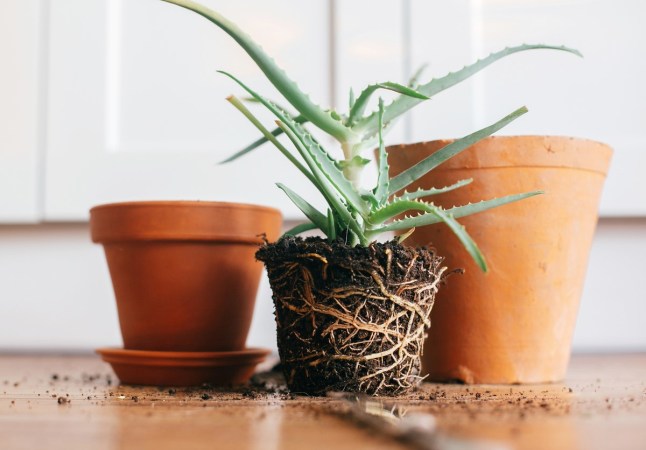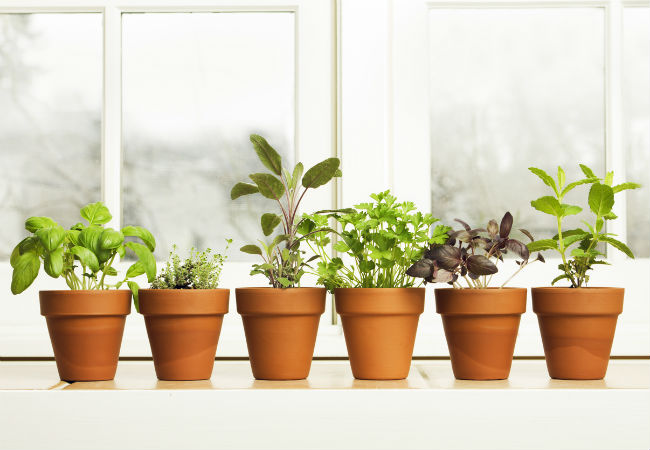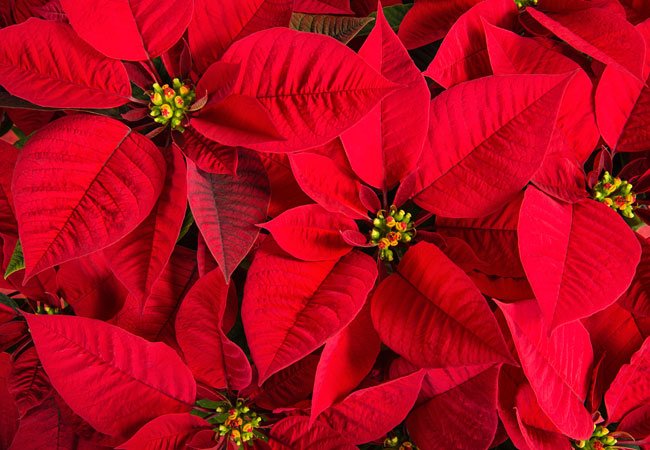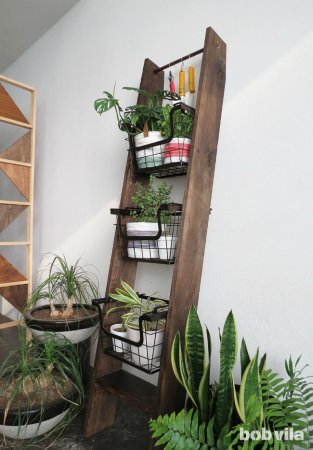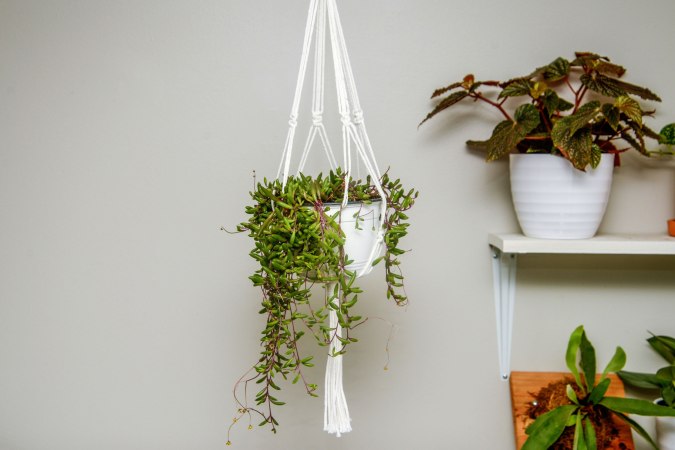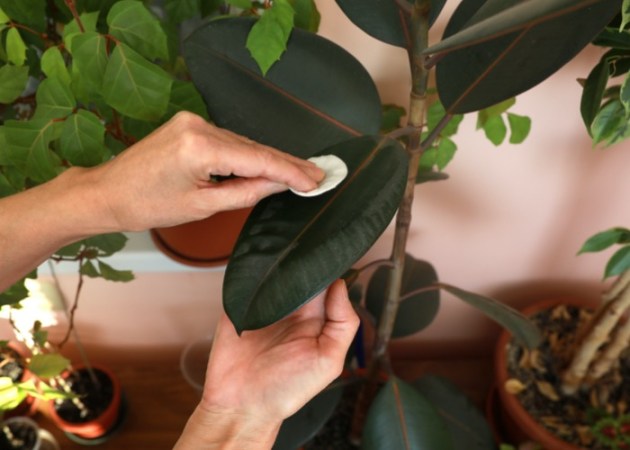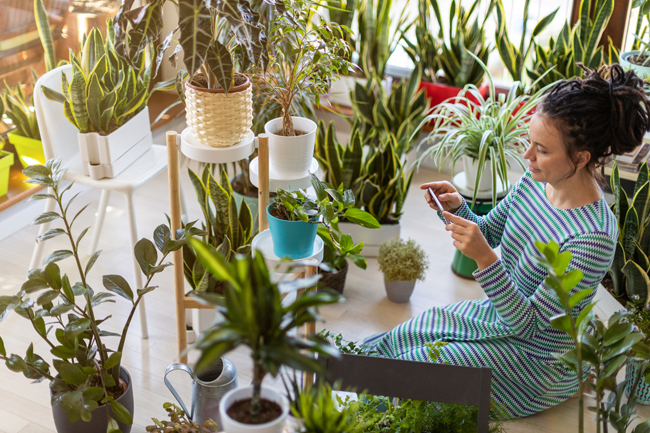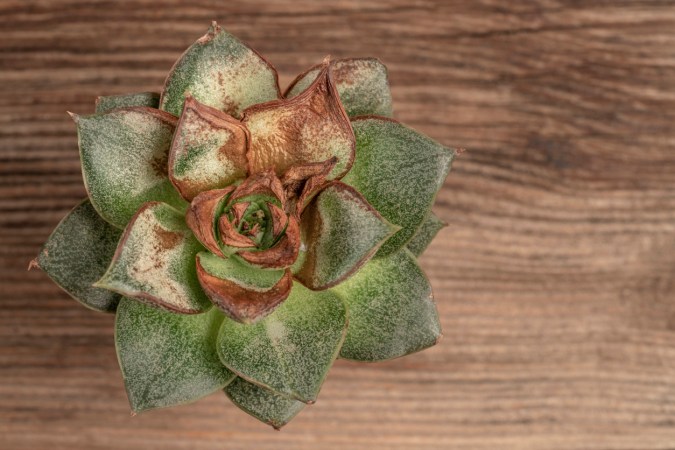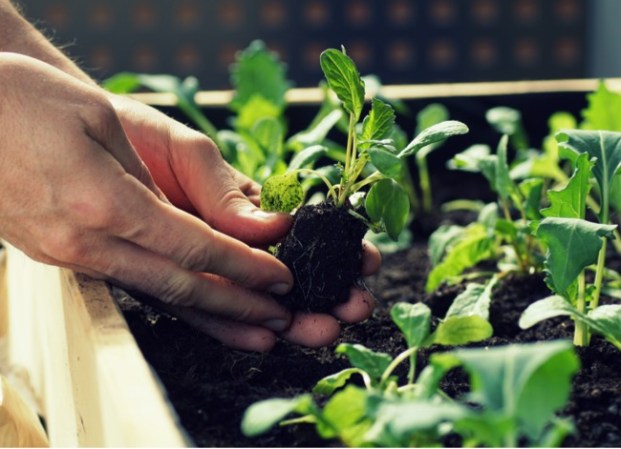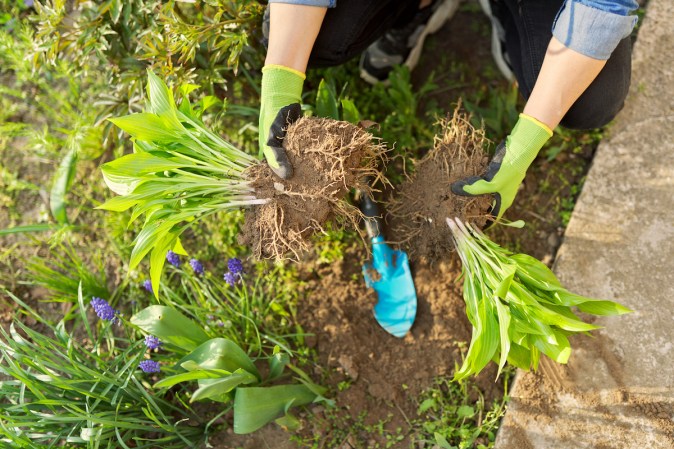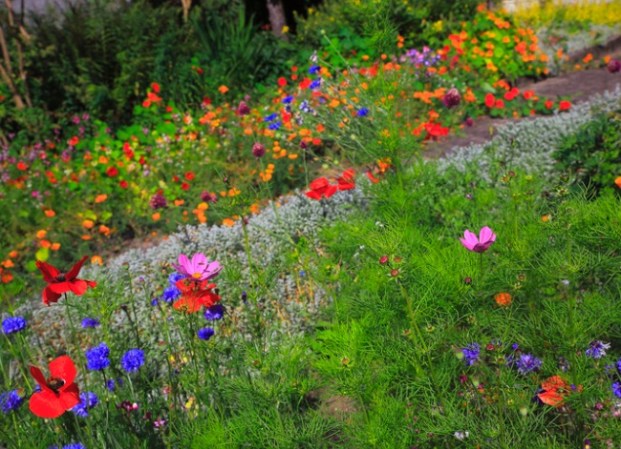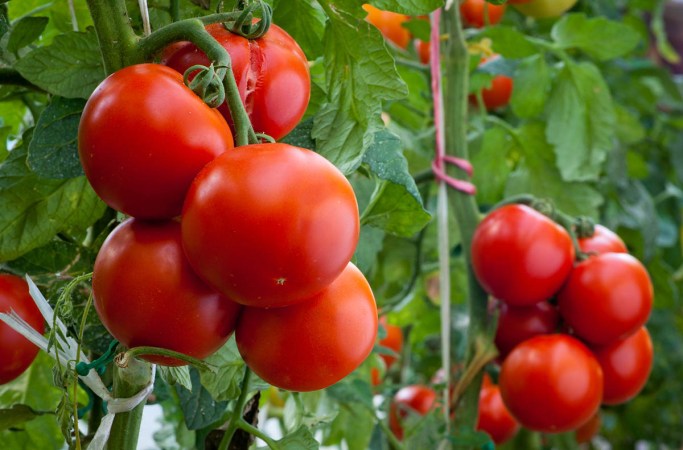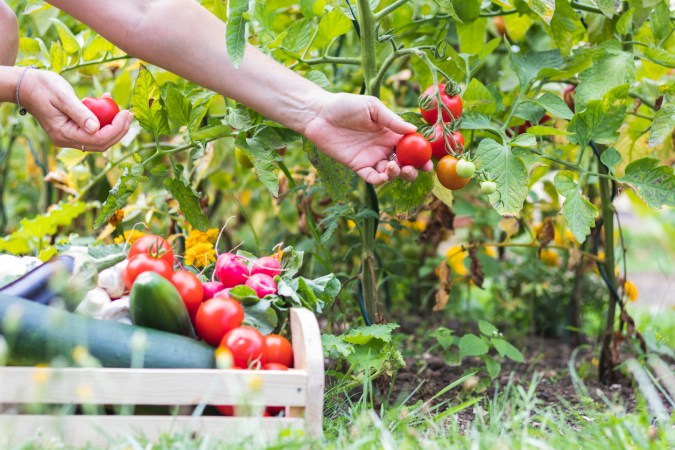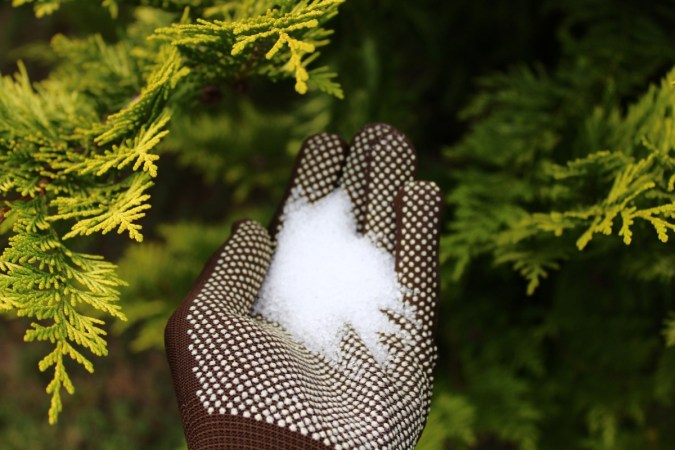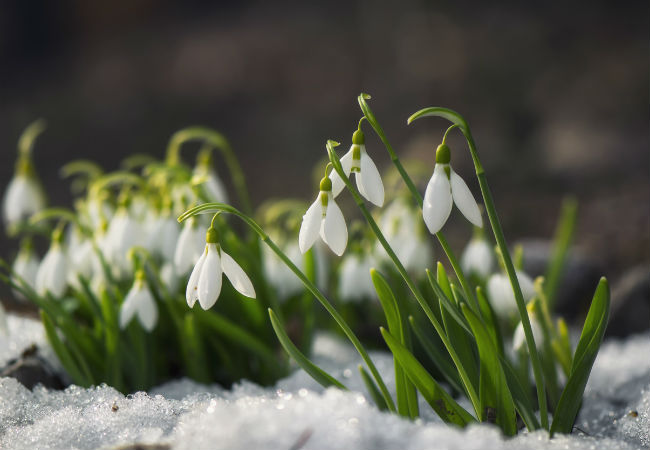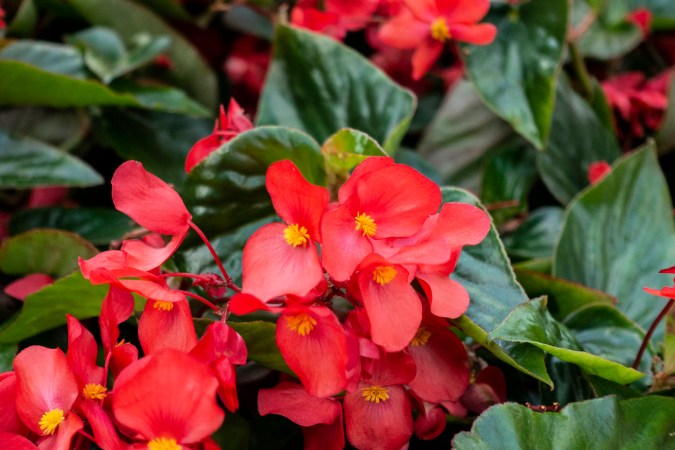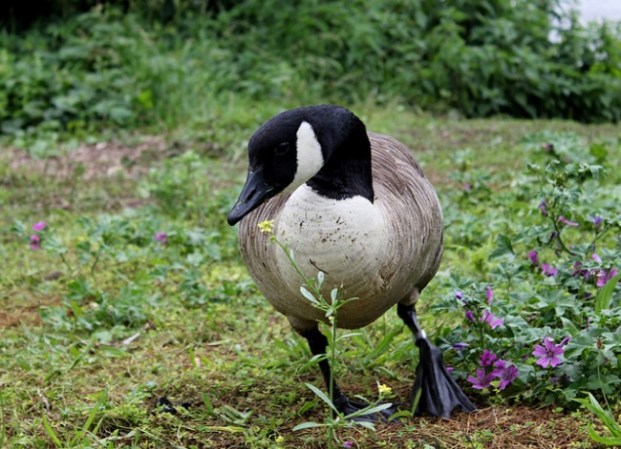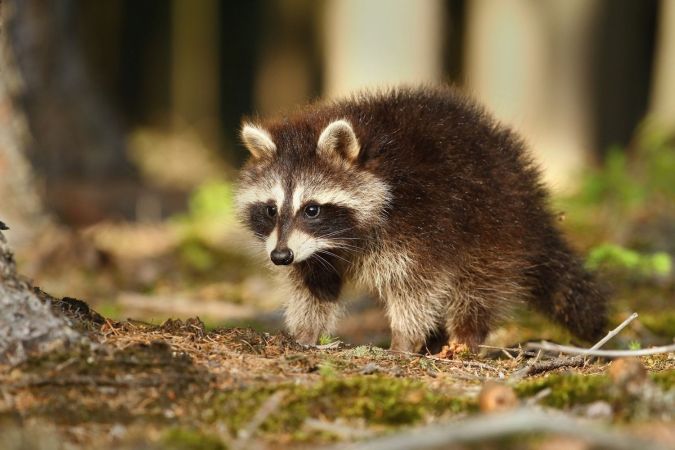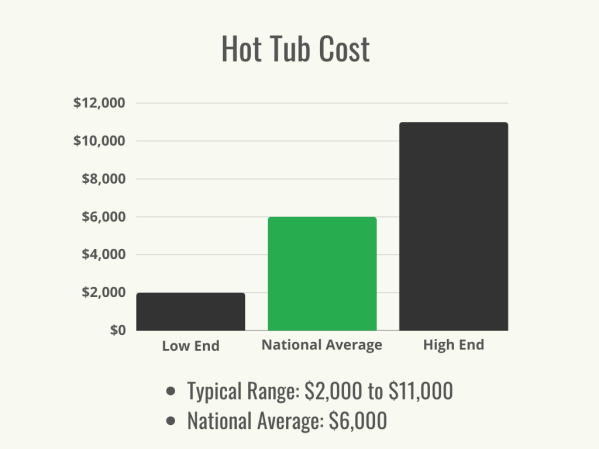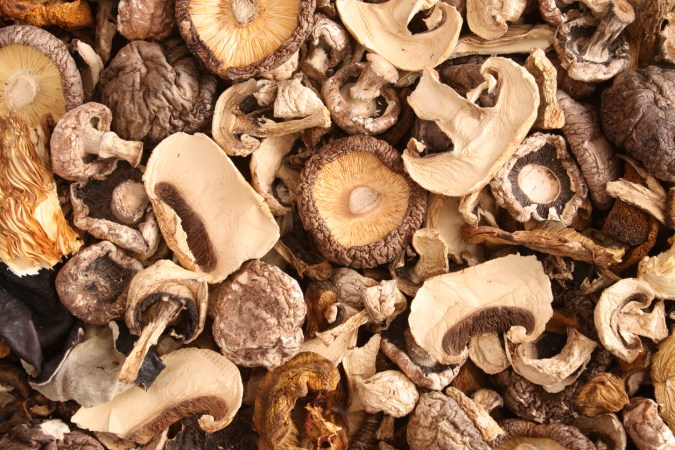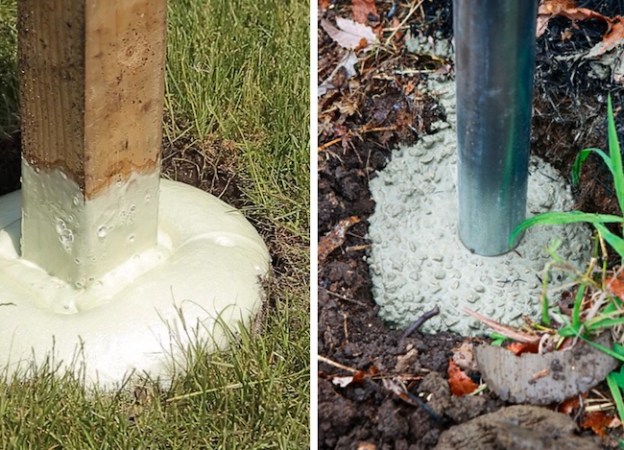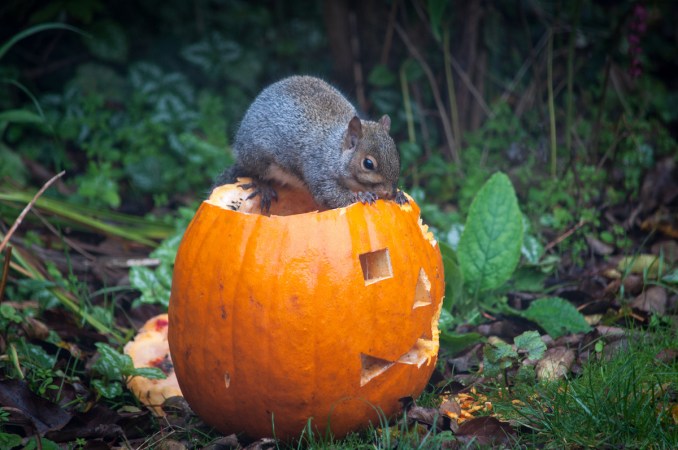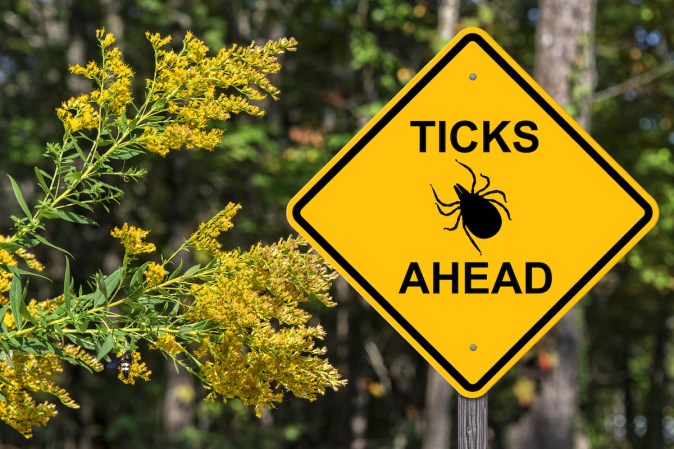We may earn revenue from the products available on this page and participate in affiliate programs. Learn More ›
As its name implies, the polka dot plant is liberally spattered with white, pink, or red beauty spots. It also goes by the charming name of “freckle face” and the ill-sounding “measles plant.”
Since polka dot plant care is easy, Tovah Martin’s The Indestructible Houseplant recommends low-growing cultivars as a groundcover to conceal the spindly stems of leggier houseplants. Or you just can use them to add spots of color to an otherwise green collection. Keep in mind that the speckled begonia is a completely different plant, so polka dot begonia care isn’t covered here.
RELATED: 8 Care Tips for Houseplants in Winter
Polka Dot Care at a Glance
Common Name: Polka dot plant, freckle face
Scientific Name: Hypoestes phyllostachya
Soil: Standard potting mix
Light: Bright, indirect light, morning sun
Water: Slightly moist at all times
Food: Balanced houseplant fertilizer
Temperature and Humidity: Typical household temperatures, high humidity
Propagation: Seed
Safety: Nontoxic

Polka Dot Plant Characteristics
Although polka dot plant (Hypoestes phyllostachya) can grow 3 feet tall in its native Madagascar, most modern cultivars vary from 6 inches to 2 feet high. Sometimes raised outdoors in partial shade, they are hardy only in USDA zones 10 through 12. Fortunately, the often-pink plants can remain in the pink of health indoors and out.
Polka dot plant flowers, 6-inch spikes of inconspicuous pink to purple blooms, generally appear in late summer or autumn after the days begin to shorten. However, this plant tends to “go to seed” after flowering—both literally and figuratively—so it’s a good idea to keep pinching those buds off.
RELATED: Here’s What Your Favorite Houseplants Look Like in the Wild
Types of Polka Dot Plants
- Confetti: This short and sweet series offers five colors in plants that grow to only 8 inches.
- Splash: If you prefer splashier dots, try the ‘Splash’ series’ four colors, in which the spots are large enough to be called splotches instead.
- Hippo Rose: Heavily painted with rose, this cultivar offers only small spatterings of green background.
Selecting Soil for Polka Dots
For the fullest look, you’ll want to place about five pink polka dot seedlings in a 4-inch pot. Fill that pot with a standard humus-rich potting soil high in either peat or compost, with a pH between 5.8 and 6.2. Once the plants begin to grow, pinch them back every time their shoots surpass 10 inches.
Since they seldom remain in peak health for longer than two years, you’ll want to think of replacing them with new seedlings in spring every other year or so. See “Propagating Polka Dot Plants” below to “connect the dots” on how to do that correctly.

The Right Light
Although these plants reportedly will tolerate any conditions between full sun and shade, too many hot midday rays cause their leaves to curl under and their colors to fade. On the other hand, low light will “knock the spots off” of them, causing them to revert to greener foliage and possibly become leggy as well.
For the best results, therefore, give them either very bright indirect light or place them on an east-facing windowsill where they receive direct sun only in the morning hours. Then watch their color for clues on whether their illumination is too little, too much, or spot on!
Watering Polka Dots
Keep the soil of your pink polka dot plants lightly moist at all times, but never soggy. (That applies to other colors too!) If possible, use rainwater or spring water rather than hard tap water to irrigate them.
Should the plants’ foliage wilt, you have allowed their soil to dry out too much. Although the polka dots usually will recover quickly when watered, frequent wilting will leave them more vulnerable to pests. On the other hand, overly saturated soil can cause root rot—especially in winter months when the plants aren’t growing much—so aim for damp rather than drenched.
Fertilizing Polka Dot Plants
Plan to feed your plant once every other week from spring through autumn with a balanced houseplant fertilizer such as 20-20-20, mixed at half strength. If the directions call for 1/2 teaspoon of the plant food per gallon of water, reduce that to 1/4 teaspoon instead. Don’t fertilize the polka dot in winter, the season when its growth should be the pokiest.
You’ll also want to avoid feeding any cultivar that you have placed in a terrarium, as that can cause it to outgrow its space too quickly. Should it begin looking peaked due to malnutrition, apply a very mild dose of plant food, one-fourth of what the directions call for.
Setting the Temperature and Humidity
The polka dot plant will tolerate any temperatures from 50 to 80 degrees Fahrenheit, but prefers average household conditions between 65 and 75 degrees Fahrenheit. However, it would like a little more humidity than is found in the average home.
Therefore, it’s a good idea to keep the plant in a partially shaded position outdoors during summer but bring it in before temperatures drop below 50 degrees Fahrenheit. During winter, you might want to enclose a low-growing cultivar in a terrarium. Alternatively, you can mist the plant frequently, and place it on a humidity tray or in a humid space such as a bathroom.
RELATED: The Best Hygrometers To Measure Humidity Within Your Home

Propagating Polka Dot Plants
When considering how to propagate polka dot plants, keep in mind they are among the few houseplants that grow easily from seed. After filling a container with damp and sterile seed-starting mix, simply press the seeds into the surface of that mix without covering them. Stretch plastic wrap over the top of the container to retain the mix’s moisture and place the container under a grow light or on a windowsill. If kept at 65 to 75 degrees Fahrenheit, the seeds should sprout in four to 14 days.
The seed leaves (the first couple to appear) will be a plain green, but the following “true” leaves should show more color. Transplant the seedlings into pots filled with potting mix when they have four leaves, and you will have succeeded with polka dot plant propagation.
Safety Considerations
Not considered a toxic species by the ASPCA, the polka dot plant reportedly still can cause vomiting and diarrhea in pets who consume it. So, it theoretically could provoke the same reaction in humans, including curious children sampling the candy-colored leaves of this frequently pink plant. Therefore, you may want to place it in a position out of reach of prowling pets and tasting toddlers.
If the plant blooms indoors, it could reproduce itself by dropping seeds into nearby pots, possibly endangering the health of less vigorous species whose space it invades. Whether you consider that proliferation a blessing or curse probably will depend on how much you dote on your polka dots.
Potential Pests and Diseases
Curling leaves and washed-out colors generally indicate that your polka dot plant is receiving too much sun, while a reversion to green and leggy growth indicates that it is receiving too little light. Leaves that yellow and drop could indicate you’ve been overwatering the plant, while those that fall abruptly without yellowing signify underwatering. As with most houseplants, brown leaf tips can warn of either low humidity or overfeeding.
Although not often bothered by pests, the polka dot plant might suffer from aphids, mealybugs, spider mites, scale, whiteflies, and other pests. If you spot any of these insects, you can try insecticidal soap—following the directions on the container—for most of those listed. However, you might need to resort to horticultural oil to smother scale.
RELATED: Beyond Poinsettias: The Best Winter Houseplants

FAQs About Polka Dot Plant Care
If your polka dot plant is driving you dotty, check below for a few quick suggestions on how to keep it at its most colorful best. Should you not find the answers for which you are searching here, check out the more in-depth information on the freckled plant’s care above.
Q: Is the polka dot plant an indoor plant?
Yes, it can be an indoor plant, an annual outdoor, or a perennial in USDA zones 10 through 12.
Q: How fast does a polka dot plant grow?
The polka dot plant reportedly takes two to four months from its sowing to mature into a full-sized specimen.
Q: How long can polka dot plants live?
Polka dot plants often grow somewhat seedy looking after a couple years, so they should be replaced frequently.
Q: How much sun does a polka dot plant need?
Polka dot plants display the best color when given only morning sun or bright, indirect light.
Q: How often should I water my polka dot plant?
Water the plant enough to keep its soil lightly moist at all times, but never soggy.
Looking for more beginner-friendly, low-maintenance, or low-light houseplants? Check out our guides on caring for snake plant, spider plant, and peace lily.


